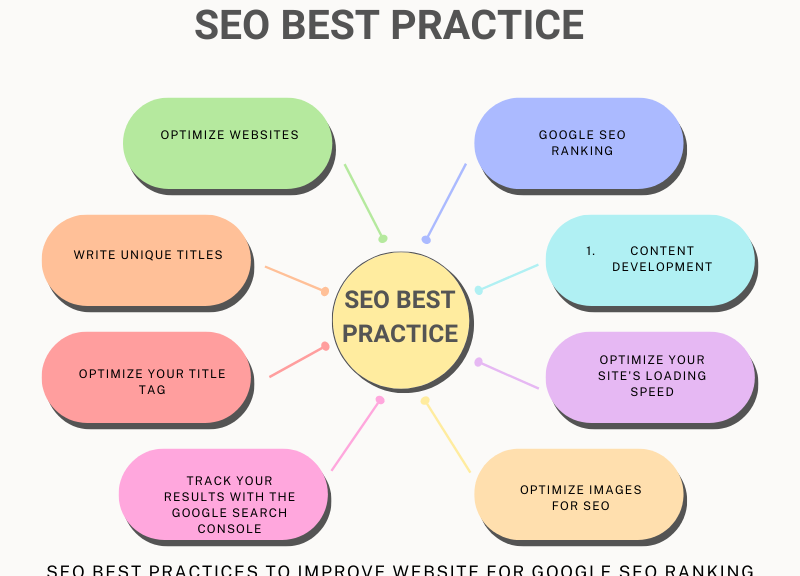How to find customers online with Search Engine Optimization
Here is introduction to Finding Customers Online with Search Engine Optimization (SEO). In today's digital age, businesses of all sizes are recognizing the immense potential of the online market. However, merely having an online presence is not enough. To thrive, you need to attract the right customers, and this is where Search Engine Optimization (SEO) comes into play. SEO is a powerful tool that can significantly boost your online visibility, making it easier for potential customers to find your business. By optimizing your website and content for search engines, you can ensure that your business ranks higher in search results, ultimately driving more traffic and increasing sales.
Transitioning to an SEO-focused strategy can be a game changer for businesses that are struggling to find customers online. The internet is a vast space, and without proper optimization, your website can easily get lost among the competition. But with the right SEO techniques, you can position your business right in front of your target audience. Whether you're a small business owner or managing a large enterprise, understanding and implementing SEO can drastically improve your online customer acquisition efforts. Let's explore the key strategies and techniques that will help you find customers online using SEO.
How to find customers online with Search Engine Optimization
Before diving into specific strategies, it's essential to understand what SEO is and how it works. SEO involves optimizing various elements of your website and content to make it more attractive to search engines like Google. The goal is to rank higher in search engine results pages (SERPs) for keywords that are relevant to your business. The higher you rank, the more visible your website becomes, increasing the likelihood that potential customers will find and visit your site.
Search engines use complex algorithms to determine which websites should appear at the top of search results. These algorithms consider various factors, including the quality of your content, the structure of your website, and the number of external links pointing to your site. By optimizing these elements, you can improve your chances of ranking higher and reaching more customers. In addition to driving organic traffic, SEO also helps build trust and credibility with your audience. When your website appears at the top of search results, it signals to users that your business is a reliable and authoritative source in your industry.
Keyword Research: The Foundation of SEO
One of the most critical aspects of SEO is keyword research. Keywords are the phrases and terms that users type into search engines when looking for information or products. By identifying and targeting the right keywords, you can ensure that your website appears in front of the right audience. Effective keyword research involves finding the terms that your potential customers are searching for and then optimizing your website's content to match those terms.
To start with keyword research, you need to brainstorm a list of potential keywords related to your business. Think about what your customers might be searching for and how they would phrase their queries. Once you have a list, use keyword research tools like Google Keyword Planner or Ahrefs to analyze the search volume and competition for each term. Focus on keywords that have a high search volume but low competition, as these will give you the best chance of ranking well. Additionally, consider using long-tail keywords, which are more specific phrases that target a niche audience. While they may have lower search volumes, they often lead to higher conversion rates because they attract users who are further along in the buying process.
On-Page SEO: Optimizing Your Website Content
On-page SEO refers to the optimization of individual pages on your website to improve their search engine rankings. This includes optimizing the content, HTML source code, and other elements on the page. The goal of on-page SEO is to make it as easy as possible for search engines to understand what your page is about and why it should rank highly for specific keywords. One of the most important on-page SEO factors is the quality of your content. High-quality, relevant, and engaging content is essential for attracting and retaining visitors. When creating content, make sure to include your target keywords naturally throughout the text. However, avoid keyword stuffing, as this can negatively impact your rankings.
In addition to content, other on-page elements that you should optimize include title tags, meta descriptions, and header tags. The title tag is the main heading that appears in search engine results, and it should include your target keyword. The meta description is a brief summary of the page's content, and while it doesn't directly impact rankings, it can influence click-through rates. Header tags (H1, H2, H3) help structure your content and make it easier for search engines to understand the hierarchy of information on the page. Additionally, ensure that your website is mobile-friendly and has a fast loading speed, as these factors also contribute to your search engine rankings.
Off-Page SEO: Building Backlinks and Authority
While on-page SEO focuses on optimizing your website, off-page SEO is about building your site's authority and reputation through external factors. One of the most important off-page SEO strategies is link building, which involves getting other reputable websites to link to your site. Backlinks are a key ranking factor for search engines because they act as a vote of confidence in your content. The more high-quality backlinks you have, the more likely it is that your website will rank highly in search results.
To build backlinks, start by creating valuable and shareable content that other websites will want to link to. This could be blog posts, infographics, or research reports that provide valuable insights to your audience. You can also reach out to other websites in your industry and ask for backlinks, particularly if you have content that complements theirs. Additionally, consider guest blogging, where you write articles for other websites in exchange for a backlink to your site. Remember, the quality of your backlinks is more important than the quantity. Focus on getting links from reputable sites with high domain authority, as these will have a more significant impact on your rankings.
Local SEO: Attracting Customers in Your Area
If your business operates in a specific geographic area, local SEO is crucial for attracting customers in your region. Local SEO involves optimizing your website and online presence to rank higher in local search results. This is particularly important for businesses like restaurants, retail stores, and service providers that rely on local customers. One of the most effective ways to improve your local SEO is by creating and optimizing your Google My Business (GMB) profile. GMB is a free tool that allows you to manage your online presence across Google, including search and maps. Make sure to complete your GMB profile with accurate information, including your business name, address, phone number, and hours of operation. Additionally, encourage customers to leave reviews on your GMB profile, as positive reviews can boost your local rankings.
Another important aspect of local SEO is optimizing your website for local keywords. This means including the name of your city or region in your content, title tags, and meta descriptions. For example, if you own a bakery in New York, you might want to target keywords like “New York bakery" or “best bakery in NYC." Additionally, make sure your website is listed in local online directories and that your business information is consistent across all platforms. This will help search engines verify your location and improve your chances of ranking in local search results.
Content Marketing and SEO: A Powerful Combination
Content marketing is a critical component of any successful SEO strategy. By creating and distributing valuable content, you can attract and engage your target audience, build trust, and ultimately drive more traffic to your website. Content marketing and SEO go hand in hand because the content you create is what search engines use to determine your website's relevance and authority. To maximize the impact of your content marketing efforts, it's essential to create content that is not only high-quality but also optimized for search engines.
Start by developing a content strategy that aligns with your SEO goals. This involves identifying the topics and keywords that are most relevant to your audience and creating content around those themes. Blog posts, articles, videos, and infographics are all effective forms of content that can help boost your SEO efforts. When creating content, make sure to include your target keywords naturally and provide valuable information that addresses the needs and interests of your audience. Additionally, consider incorporating multimedia elements like images and videos, as these can enhance the user experience and improve your search engine rankings.
Technical SEO: Ensuring Your Website is Search Engine Friendly
Technical SEO refers to the optimization of the technical aspects of your website to ensure that search engines can crawl and index your site effectively. While technical SEO may seem complex, it is essential for ensuring that your website is search engine friendly and can rank well in search results. Some of the key technical SEO elements include site speed, mobile-friendliness, and website structure. A fast-loading website is crucial for both user experience and SEO. If your website takes too long to load, visitors are likely to leave, which can increase your bounce rate and negatively impact your rankings.
To improve your site speed, consider optimizing your images, minimizing your code, and using a content delivery network (CDN) to deliver your content faster. Additionally, make sure your website is mobile-friendly, as more and more users are accessing the internet from their mobile devices. A responsive design that adjusts to different screen sizes is essential for providing a seamless user experience on all devices. Finally, ensure that your website has a clear and logical structure, with easy-to-navigate menus and internal links that help users and search engines find the information they need.
Measuring and Analyzing Your SEO Performance
Once you've implemented your SEO strategy, it's important to regularly measure and analyze your performance to ensure that your efforts are paying off. SEO is not a one-time task but an ongoing process that requires continuous monitoring and optimization. By tracking key metrics, you can identify what's working, what needs improvement, and where you should focus your efforts moving forward. Some of the most important SEO metrics to track include organic traffic, keyword rankings, and conversion rates. Organic traffic refers to the number of visitors who find your website through search engines, and it is a key indicator of the success of your SEO efforts. Use tools like Google Analytics to monitor your organic traffic and see which pages are driving the most visitors.
In addition to organic traffic
, track your keyword rankings to see how well your website is performing for your target keywords. If you're not ranking as high as you'd like, it may be time to revisit your keyword strategy and make adjustments to your content. Finally, monitor your conversion rates to see how many of your visitors are taking the desired actions on your website, such as making a purchase or filling out a contact form. If your conversion rates are low, consider optimizing your landing pages and calls to action to make them more compelling and user-friendly.
The Role of Social Media in SEO
While social media and SEO are often seen as separate marketing channels, they can actually work together to enhance your online presence and attract more customers. Social media platforms like Facebook, Twitter, and LinkedIn provide an excellent opportunity to promote your content, engage with your audience, and drive traffic to your website. When your content is shared on social media, it can also lead to more backlinks and improved search engine rankings. To leverage social media for SEO, start by sharing your content regularly on your social media profiles. This can help increase the visibility of your content and attract more visitors to your website.
In addition to sharing your own content, engage with your audience by responding to comments, asking questions, and participating in relevant discussions. This can help build relationships with your followers and encourage them to share your content with their networks. Additionally, consider using social media to connect with influencers in your industry. Influencers can help amplify your content and drive more traffic to your website, which can ultimately boost your search engine rankings. Finally, make sure to include social sharing buttons on your website to make it easy for visitors to share your content on their social media profiles.
Staying Up-to-Date with SEO Trends and Best Practices
SEO is constantly evolving, and what works today may not be as effective tomorrow. Search engines like Google are continually updating their algorithms to provide better search results, and it's essential to stay up-to-date with the latest trends and best practices to maintain your rankings. By staying informed and adapting your strategy as needed, you can ensure that your website remains competitive and continues to attract customers online. One of the best ways to stay up-to-date with SEO is to follow industry blogs and publications.
There are many reputable sources of SEO information, including Moz, Search Engine Journal, and Neil Patel's blog. These resources provide valuable insights, tips, and updates on the latest SEO trends and strategies. Additionally, consider attending SEO conferences and webinars to learn from industry experts and network with other professionals. Another important aspect of staying up-to-date with SEO is regularly auditing your website to identify any issues that could be impacting your rankings. Use tools like Google Search Console to monitor your site's performance and fix any errors or issues that may arise. By regularly auditing and optimizing your website, you can ensure that it remains search engine friendly and continues to attract customers online.
Conclusion: Finding Customers Online with SEO
In conclusion, finding customers online with Search Engine Optimization is a powerful strategy that can significantly boost your business's visibility and drive more traffic to your website. By understanding the basics of SEO, conducting thorough keyword research, optimizing your website's content, and building a strong online presence, you can attract more customers and grow your business. Remember that SEO is an ongoing process that requires regular monitoring and optimization. By staying up-to-date with the latest trends and best practices, you can ensure that your SEO strategy remains effective and continues to deliver results.
As you implement these strategies, keep in mind that SEO is not a one-size-fits-all solution. Every business is unique, and it's important to tailor your SEO approach to meet your specific goals and needs. Whether you're a small business owner or managing a large enterprise, the key to success with SEO is consistency, patience, and a commitment to providing value to your audience. With the right approach, you can find customers online and take your business to new heights.








